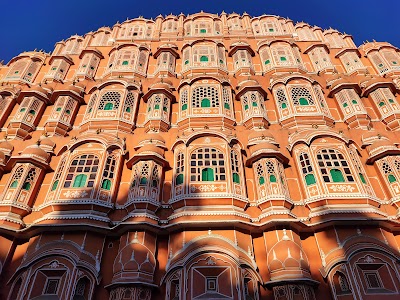
Hawa Mahal
Jaipur, India
- Capture stunning photographs
- Experience local culture
- Explore the intricate architecture
- Learn about Rajput history
Known for:
Description:
Hawa Mahal, also known as the "Palace of Winds," is an iconic pink sandstone structure in Jaipur, India. Its unique five-story exterior, resembling a honeycomb, features 953 small windows, or "jharokhas," decorated with intricate latticework. These windows allowed the royal ladies to observe street life while remaining unseen. The palace is a blend of Rajput and Mughal architectural styles. While visually stunning from the outside, the interior is relatively plain, consisting of interconnected corridors and chambers. Hawa Mahal is a popular tourist attraction and a symbol of Jaipur's rich heritage.
History:
Hawa Mahal was built in 1799 by Maharaja Sawai Pratap Singh, the grandson of Maharaja Sawai Jai Singh II, the founder of Jaipur. It was designed by Lal Chand Ustad in the form of the crown of Krishna, the Hindu god. The purpose of the Mahal's unique structure was to allow the royal ladies of the Rajput court to observe everyday life and festivals celebrated in the street below without being seen, as they had to observe strict "purdah" (the practice of female seclusion). The latticework windows provided ventilation, creating a cool environment inside, especially during the hot summer months. The palace is an excellent example of Rajputana architecture and a testament to the ingenuity of the craftsmen of that era.